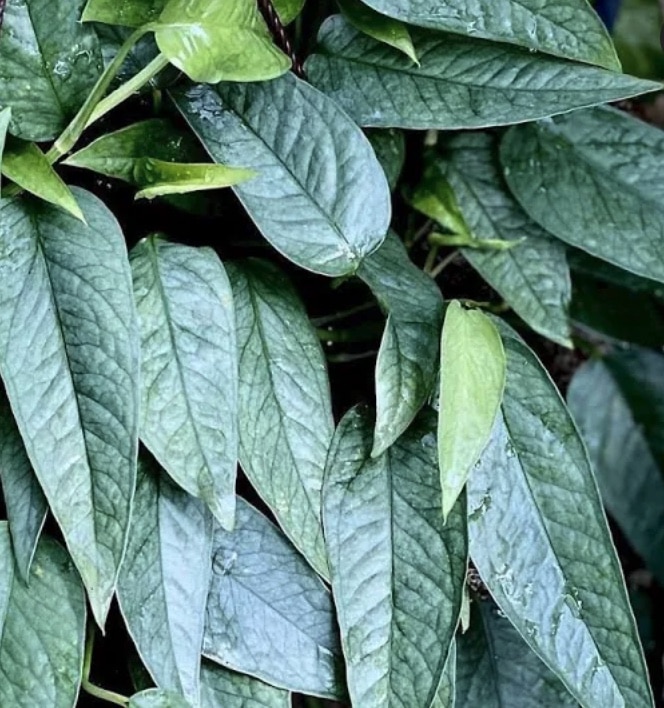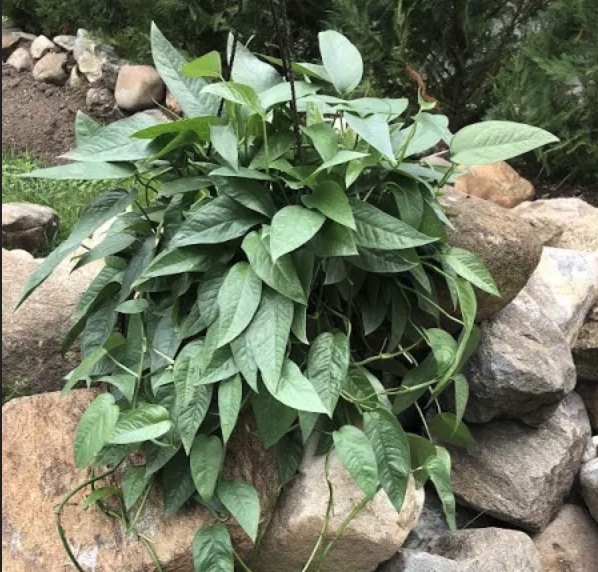The Philodendron Cebu Blue Plant (Epipremnum Pinnatum) is a unique and interesting species. It’s commonly grown as a houseplant but can also thrive outdoors in USDA zones 9 to 11. This plant has a different structure when it’s a juvenile to when it’s matured.
The Philodendron Cebu Blue plant has several nicknames, amongst them devils’ ivy or dragon tail plant. This unique plant is part of the ‘Epipremnum’ genus and is a flowering plant. Let’s look at how to grow and care for a Philodendron Cebu Plant.
What is a philodendron cebu blue?

This plant’s scientific name is Epipremnum Pinnatum Cebu Blue, which is too much of a mouth full for most people. Hence the plant, which is part of the Araceae family, has been given several nicknames. This vining evergreen plant originates from Asia and is particularly common in Cebu Island, part of the Philippines. It’s also found growing in other parts of Asia and North Australia.
During its life cycle, the Philodendron Cebu Blue goes through two phases known as the juvenile and the mature phase. In the juvenile stage, the plant’s leaves are a silver or bluish-gray color. Each plant can have different leaves that are a slightly different hue, which makes the plant look very beautiful. The leaves are an elongated oval shape and grow up to three inches long. The juvenile Philodendron Cebu Blue is a terrestrial planet that can grow without any support.
As the Philodendron Cebu Blue starts to mature, its leaves become darker and eventually turn green. The leaves grow relatively quickly and with a zig-zag pattern. At this stage, the plant looks like the fronds of a palm tree and can grow up to 3 feet in length. The mature plant is a climber and an epiphyte nature which means it can cling to other plants and live as an air plant.
How to care for a philodendron cebu blue
The Philodendron Cebu Plant is relatively rare and has long vines which can grow up to ten feet long. These plants are generally considered low maintenance.
Watering
The Philodendron Cebu Blue requires enough water to keep the soil moist. Most people find that they water their plants once or twice weekly. Your plant may need more water if the climate is hot.
Sunlight and Temperature
Philodendron Cebu Blue plants prefer bright indirect sunlight but can also survive in areas of lower light. Don’t leave your plant in the full sun, or the leaves will scratch. These plants thrive in areas with a temperature of between 60 to 80 degrees Fahrenheit. Philodendron Cebu Blue plants require moderate humidity levels but can cope with a slightly drier climate than the rainforest would provide. It’s a good idea to regularly mist your plant to keep it healthy.
Soil
The Philodendron Cebu Blue thrives in well-draining soil. It will adapt to any ground it’s planted in as long as it doesn’t become waterlogged. A standard house plant soil is fine with some perlite mixed in.
You may like to grow your Philodendron Cebu Blue in a hanging basket while in the juvenile stage. This will allow the plant’s vines to dangle down, and it will look beautiful. Plants grown in this way won’t mature as they will have nothing to climb up.
Alternatively, you can grow your plant in a pot and use a moss support to encourage your plant to mature and start climbing.
Pests
The Philodendron Cebu Blue can be affected by common insect pests such as mealybugs and spider mites. These insects can be controlled using insecticide sprays. You can also wipe the leaves, paying particular attention to the undersides to get rid of insects and eggs.
Conclusion
The Philodendron Cebu Blue is a very unique and beautiful plant that is part of the Araceae family. They grow in two different ways depending on how mature the plant is. Young plants look particularly beautiful and can be kept young looking by planting in a hanging basket.
To mature, the plant requires an upright structure to grow against. This would be a tree in the wild or a moss pole for houseplants. These plants are generally considered easy to care for as long as they are watered and place in the correct sunlight. You may also want to check out, the Philodendron Red Princess, which is a lovely alternative to this one.
